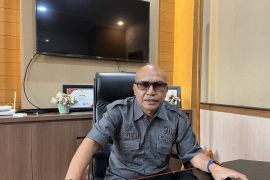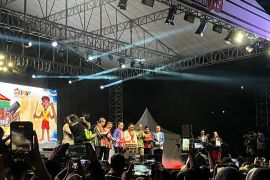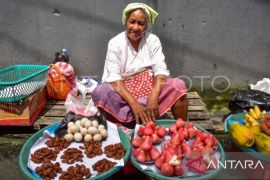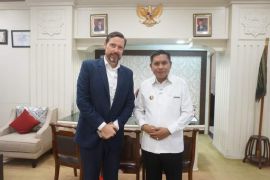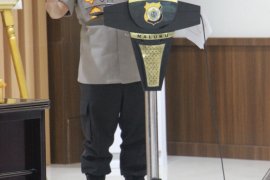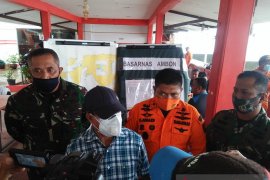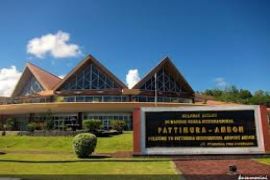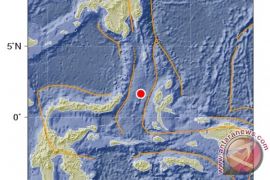The formation of Minapolitan areas by the Maritime Affairs and Fisheries Ministry (DKP) is meant to increase fish production, especially of affordable fish for local communities.
Ambon is one of nine fishing base sites as the Minapolitan development areas after Pelabuhan Ratu in West Java, Muncar and Tampera in East Java, Cilacap in Central Java, Ternate in North Maluku, Bitung in North Sulawesi, Belawan in North Sumatra, and Sungai Liat in Bangka-Belitung.
To support the Minapolitan program in Ambon city, the central government will this year disburse Rp7 billion funds in two phases to the program.
"In the first phase, the Directorate General of Capture Fisheries of the DKP will disburse Rp1 billion of the funds for the procurement of several fishing boats of 15 gross tonnage for the local fishermen," Ambon Maritime Affairs and Fisheries Department spokesman Adser Lamba said in the city on Thursday.
Lamba said the second phase of the funds of about Rp4 billion would also be used for the procurement of fishing boats.
Meanwhile, the Department of Maritime Affairs and Fisheries` Directorate General for Processing and Fisheries Product Marketing (P2HP) will also give a special assistance of Rp600 million from Budget-funded Project Proposal Lists (DIPA) for cold chain system in an effort to improve the quality of fishery products.
Besides, Ambon`s Maritime Affairs and Fisheries Department will also get 2011`s special allocation of funds (DAK) of Rp2.9 million to support the Minapolitan program in the city, Lamba said.
He admitted that the Minapolitan development map in Ambon has been made to last from 2011 until 2015.
According to him, the Minapolitan area development in Ambon will be conducted at two locations, namely Ambon Inner Bay area at Waiheru village in Nusaniwe sub-district, and Fish Landing Port at Eri village in Nusaniwe sub-district.
Attending Sail Banda 2010 peak event in Ambon in August last year,
President Susilo Bambang Yudhoyono officially declared Maluku Province as a national fish barn.
On the occasion he head of state said that Maluku province had a big fishery potential of 1.64 million tons per year for the prosperity of the province and the nation.
Therefore the president at the time asserted that the government would fully support the efforts of the Maluku people to step up fishery production in their province.
"Maluku has a big fishery potential for the national welfare and therefore I fully support the province`s efforts to be a national fish barn," the president said st the time.
Indeed, Maluku has 600,000 sq km of sea with extensive marine resources for the local people`s prosperity, and to support its economic growth.
The head of state declared Maluku as a national fish barn because the province was home to one of the most incredibly diverse marine ecosystems in Indonesia.
Maluku`s waters are known as the habitat of more than 3000 fish species and several hundred identified coral species with the numbers still rising, and even the healthiest of Caribbean reefs only had 10 to 20 percent of the species diversity of a comparable reef in Ambon in particular and in Maluku in general.
The waters of Ambon and Maluku are blessed with various kinds of fish such as devil scorpionfish, strange octopus, boxer crabs, leaf scorpionfish, nudibranchs galore, weird frogfish, shrimps, stargazers, Flamboyant Cuttlefish, Rhinopious, loads of frogfish, Cockatoo Waspfish, ghost pipefish.
Maluku fishery resources consisted of 980,100 tons of small pelagic fish, 295,500 tons of demersal fish, 47,700 tons of coral fish, 44,000 tons of shrimp, 800 tons of lobster, and 10,570 tons of squid per year.
"The fishery potential existing in Maluku must be used to support the economy of this region in particular and Indonesia in general," Maritime Affairs and Fisheries Minister Fadel Muhammad has said.
Therefore the development of Minapolitan areas is the focus of the Maritime Affairs and Fisheries Ministry in 41 Indonesian region in 2011.
Fadel Muhammad during the ministry`s 2011 outlook meeting in Jakarta last week said that this year his office would focus onformation of Minapolitan areas consisting of nine fishing based sites, 24 aquaculture sites, and eight central salt sites.
The nine fishing based sites are located in Pelabuhan Ratu in West Java, Muncar and Tampera in East Java, Cilacap in Central Java, Ternate in North Maluku, Bitung in North Sulawesi, Belawan in North Sumatra, Sungai Liat in Bangka-Belitung, and Ambon in Maluku.
The other 24 pilot aquaculture based Minapolitan are located in Muoro Jambi, Kampar, Bogor, Banyumas, Blitar, Gunung Kidul, Morowali, Sumbawa, Sumba Timur, Banjar, Pohuwato, Boyolali, Klaten, Gresik, Lamongan, Serang, Maros, Pangkep, Pesawaran, Bintan, Bangli, Musi Rawas, Pandeglang and Kapuas.
The eight salt centers are located in Cirebon, Indramayu, Rembang, Pati, Pamekasan, Sampang, Sumenep, and Nagakeo.
Besides, the ministry is also designing a Mega-Minapolitan project in Morotai, North Maluku, in which Taiwan reportedly is interested in developing the island as the center of the largest fisheries for aquaculture and fisheries.
The Mega-Minapolitan project is a large scale Minapolis where major investors will be given special facilities and liberties.(*)
Reporter: Fardah
Editor: Aditia Maruli Radja
Copyright © ANTARA 2011
